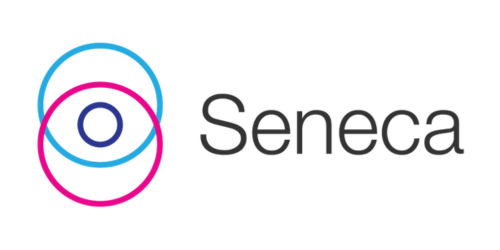The Core Lithium Ltd (ASX: CXO) share price was down 75.5% in 2023, following an 81.3% decline in the lithium price during the year. However, the latest news on 5 January 2024 spooked investors and resulted in a further 18% decline. Is it time to sell before Core Lithium (CXO) goes to zero?
Production suspended amid weak lithium price
Core Lithium’s Finniss mine 90km out of Darwin, Northern Territory has suspended mining operations at its Grants open pit to preserve cash – the read through here is the cost of mining the ore is lower than the prevailing lithium prices. The lithium mine employs 300 workers, with up to 150 of them expected to be laid off as a result of the decision.
The news comes after the spodumene concentrate price has declined more than 85% in the last 12 months, including by 50% since the end of October 2023.
We highlighted production difficulties after the June 2023 quarterly report for the RASK community here, when the share price was c. $0.70 (and 3.5x the current share price of c. $0.19). The warning signs in our view, were clear:
- difficulties mining with disparate mineralisation;
- a short mine life; and
- relatively high mining costs
The recent December 2023 quarterly report was worse, showing a -$28.8 million operating cash loss from 28,800 tonnes of spodumene concentrate production, 5% below market expectations. Cash operating costs of A$1,953/tonne were also above market expectations and sit above the current spot price for spodumene.
Core also spent $46 million on mine development capital expenditure, despite the decision to defer development at its BP33 underground project, located 5km away from the primary Grants open pit.
Battery minerals casualty list grows
Citi analysis in December suggests that at current lithium spodumene prices just under US$1,000/tonne, the Mt Cattlin mine in Western Australia owned by Arcadium Lithium CDI (ASX: LTM) – formerly Allkem – is now loss making. Mineral Resources Ltd’s (ASX: MIN) Mt Marion and Bald Hill mines are in the marginal profitability category.
Lithium giant Albemarle Corporation (NYSE: ALB) has cut back its Australian growth plans, putting its plans to add a fourth train at Kemerton in Western Australia on ice and reducing its 2024 forecast capital expenditure by 37% to $US500m.
The Liontown Resources Ltd (ASX: LTR) share price is once again in the doldrums after the termination of a commitment letter it received from a syndicate of banks for a A$760 million debt funding package, with the syndicate citing uncertainties surrounding the economic viability of the proposed underground lithium mine. This comes just one week after major shareholder Albemarle Corporation sold their stake that was previously accumulated during a takeover attempt.
Elsewhere in the battery minerals sector, nickel prices have declined 48% on the London Metals Exchange (LME) since December, as low-cost (and high emissions) Indonesian nickel laterite flooded the market with supply.
Competitor nickel sulphide operations in Western Australia are paying the price:
- First Quantum Minerals Ltd (TSE: FM) put its Ravensthorpe nickel laterite mine on care and maintenance;
- BHP Group Ltd’s (ASX: BHP) Nickel West admitted to evaluating options “to mitigate the impacts of the sharp fall in in nickel prices” with a possible write down to the carrying value of the group’s nickel assets at the release of its financial results on 20 February 2024;
- Andrew “Twiggy” Forrest’s Wyloo shut down its Kambalda mine after purchasing Mincor Resources NL (ASX: MCR) just 6 months ago;
- Debt laden Western Australian nickel miner Panoramic Resources Ltd (ASX: PAN) has entered voluntary administration; and
- IGO Ltd (ASX: IGO) is reviewing its Cosmos nickel with the project facing a large write down.
Outlook for Core Lithium (CXO)
While the mining suspension is supposedly temporary, CXO requires the lithium price to rebound to get back on its feet.
In the interim, processing at Core’s lithium concentrator will continue from its ~280kt stockpile of mined material. At the current run-rate, these stockpiles should last until mid-2024 according to analysts at Canaccord.
Rather than continuing to mine at a higher cut-off grade and (as a result of low prices) relatively slim margins, the decision by management to suspend production retains optionality, life of mine and (hopefully) profitability when the forecast bounce in prices occurs.
Finniss unit costs are projected to come down from ~US$1,200/t to ~$590/t by FY27 by analysts, which would see it capitalise on the next upswing in the lithium price cycle.
Lessons for investors
Here at Seneca, we follow a strict criterion that guides our investments in miners and mining project developers – that are all by nature, price-taking, cyclical and capital-intensive businesses. We are looking for projects that are:
- Globally significant resource discoveries (scale, long mine life).
- Located in a tier-1 jurisdiction.
- Reasonably expected to operate in the bottom quartile of the cost curve.
While Core is arguably in a tier-1 jurisdiction (we’d perhaps argue this point, but in any case…) the resource is not of sufficient scale and in our view, had little chance of operating sustainably in the first quartile of the cost curve.
The c. 90% destruction of shareholder value from its high at $1.60 highlights the sort of risk investors face when ‘following the herd’.
The strategic review announcement drew 138,000 eyeballs on HotCopper, with a post on short sellers getting a remarkable 285,000 clicks.
We regard management or investors whinging about short sellers as a ‘red flag’, and believe that capable management teams, developing meaningful, profitable projects continue to attract the requisite capital and talent to generate strong returns for shareholders through the cycle.
Short interest in Core is currently 13.82% of the outstanding shares on issue, the 3rd most of any ASX-listed company. Large cap lithium producer Pilbara Minerals Ltd (ASX: PLS) has the largest short interest at 21.18%. We shared our thoughts on why PLS is so heavily shorted with Stockhead here.
Are CXO shares a buy or a sell?
Mining is a cyclical business, and the ASX-listed resources sector is considerably more volatile than its industrial counterpart.
Spodumene, lithium and the global physical and financial market for battery minerals is still in its infancy and while it’s forecast to grow at c. 25% p.a. over the next decade, investors should continue to expect volatile trading conditions as demand and supply dynamics stabilise.
For the stock-specific reasons mentioned, we continue to avoid Core Lithium (CXO) shares but remain highly constructive on lithium market fundamentals and higher-for-longer prices. We think investors should seek out companies in line with our above-stated criteria and invest conservatively in low cost, large-scale producers with the cash to ride out the cycle (and perhaps even consolidate the market.)
What shares are we buying?
After outperforming in 2023 with our 3 high dividend yield share picks, we’ve just released our 3 best dividend-paying ideas for 2024. You can get your copy at here.


